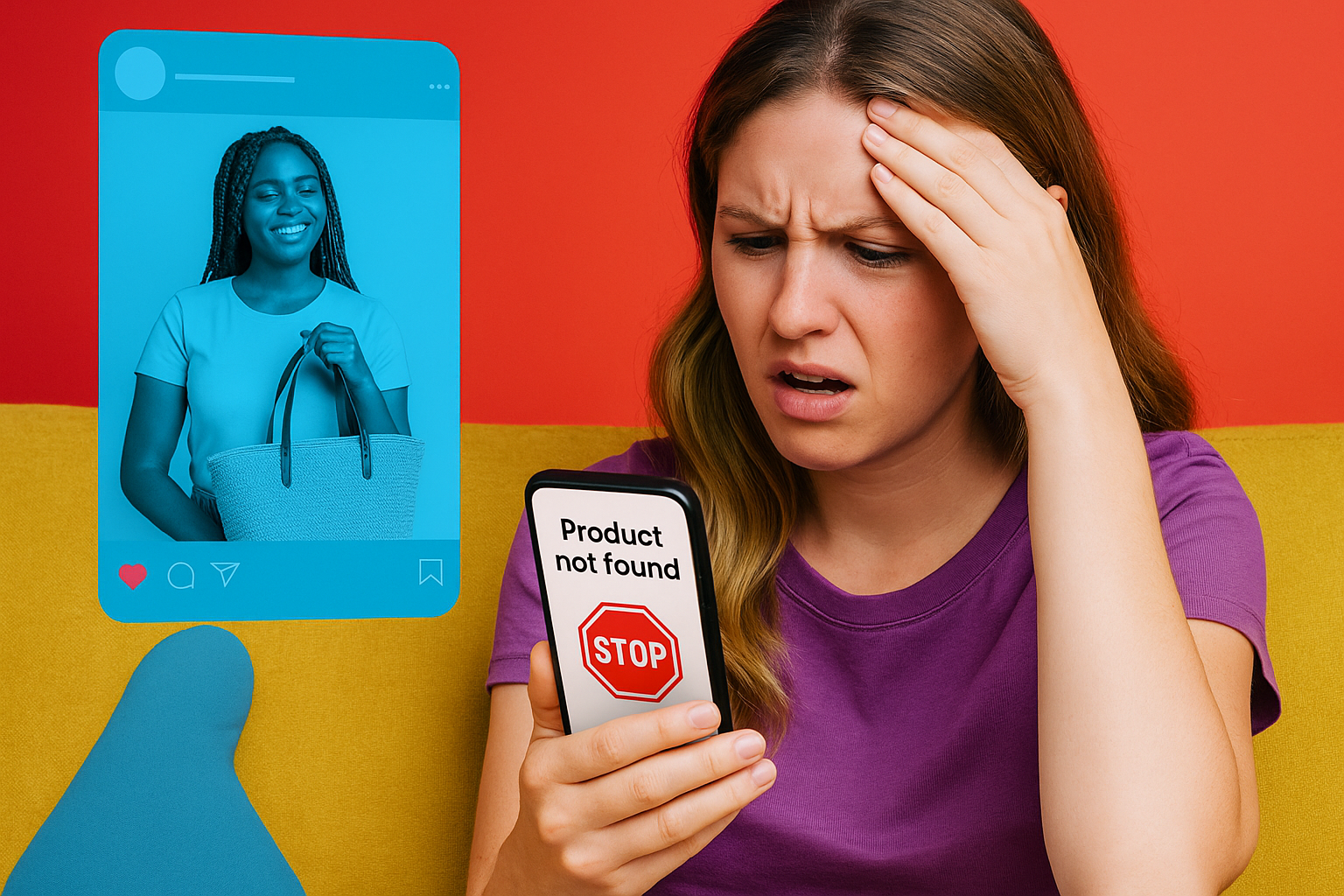Creators and influencers are fast becoming a powerful new sales channel — not just raising awareness, but directly driving purchases. As brands invest more into creator marketing, the line between content and commerce is disappearing. But without ecommerce leadership, this new channel is riddled with broken links, outdated product data, and poor conversion. To truly scale, creator commerce needs the same rigor and ownership as any core sales channel — and that means it’s time for ecommerce execs to get involved.
Over the past decade, the consumer journey has undergone a seismic shift. Where once product discovery began on search engines or brand websites, today it starts on social platforms - TikTok, Instagram, YouTube, and increasingly, emerging spaces like Threads or Lemon8. Consumers aren’t just passively scrolling; they’re actively shopping. Creator content is the new storefront window. But while marketers have quickly adapted, shifting budgets into creator marketing to capture attention and drive influence, ecommerce leaders have often been left on the side lines - and it’s starting to show.
From Buying Impressions to Buying Sales
Marketers are under pressure to deliver ROI. The era of fuzzy brand impressions is giving way to performance-driven creator marketing - where creators aren’t just generating awareness, but influencing measurable conversion. As a result, more brands are evolving from one-off influencer campaigns to scaled creator programs with always-on content and persistent presence across platforms.
But with this evolution comes a critical shift: creator marketing is no longer just a top-of-funnel tactic. It's becoming a direct commerce channel - and that demands ecommerce to get involved.
Enter the Creator Storefront
Creator storefronts - curated, shoppable destinations tied to individual creators - are emerging as a powerful way to convert influence into sales. Typically hosted on a brand’s ecommerce site, these storefronts bridge the gap between inspiration and purchase.
And yet, for many brands, these storefronts live in a kind of no-man’s land: run by marketing teams with little involvement from ecommerce. The result? Broken shopping journeys that would never be tolerated on a brand’s own site.
The Pitfalls of Disconnected Creator Commerce
When ecommerce teams aren’t at the table, the consumer experience suffers. Common issues include:
- Broken links: URLs that lead to 404 pages or product categories, making it hard for shoppers to find promoted products.
- Out-of-stock products: No real-time inventory integration means creators continue promoting items that are no longer available.
- Outdated content: Promotions that have ended, pricing that’s incorrect, seasonal messaging that’s no longer relevant.
- Inconsistent branding: Storefronts that feel disconnected from the brand experience, potentially on a different domain, causing friction and drop-off.
- No data loop: Without ecommerce integration, marketers lack the insight into what’s actually selling, and can’t optimize accordingly.
These are not just technical glitches - they are revenue blockers and brand trust risks.
From One Funnel to Many
For years, ecommerce was built around a single, linear funnel: the assumption was that traffic would land on your homepage, then follow a structured path through category pages to the product detail page, and finally to checkout. The entire architecture - from navigation to merchandising to performance optimization - was built to support that flow.
But traffic from social doesn’t follow that path.
Instead, shoppers come in sideways - mid-funnel or even low-funnel - driven by rich, contextual content from creators. They’ve already seen how the product fits into their lifestyle, how it pairs with other items, how someone they trust uses it. They’re not starting at square one - they’re coming in with intent, influenced by context that rarely matches the default PDP.
And that’s the problem. The moment they click, that context disappears. Instead of a cohesive experience that reflects the creator’s story - a complete outfit, a skincare routine, a travel kit - they’re dropped into a static product page. No outfit. No bundle. No narrative. Just a product floating in the void. Unsurprisingly, conversion rates suffer.
This is why the future isn’t one funnel - it’s many entry points. Brands are beginning to embrace a multi-head commerce architecture, where different “heads” (or front-end experiences) sit on top of a unified commerce platform, each one tailored to the context and origin of the shopper.
Gone are the days of trying to personalize the homepage for every traffic source. That approach largely failed - it was too generic, and relied on visitor identification, which is increasingly problematic. Instead, we’re moving toward a world where the homepage becomes increasingly marginalized, and shoppers land directly in commerce experiences designed specifically for them.
Think of how banking has evolved. In the past, you’d visit a branch and a single teller would try to handle everything — from cash withdrawals to mortgage advice. Today, the experience is entirely contextual. Want to pay a friend? You use an app. Need cash? You go to an ATM. Applying for a mortgage? You book time with a specialist. Each touchpoint is purpose-built for a specific need, optimized for the task at hand.
Ecommerce is heading in the same direction. The one-size-fits-all homepage is the digital equivalent of the old bank teller —trying to serve every shopper, no matter their intent. But modern commerce demands experiences tailored to context: curated bundles for social shoppers, repeat purchases on subscription flows, high-consideration journeys for premium products. Just like banking, commerce must now meet the customer where they are — with the right tools, content, and flow for what they’re trying to achieve.
And thanks to AI and automation, that future is finally viable. What once required months of dev work and cross-functional coordination can now be generated, tested, and optimized dynamically - storefronts, bundles, merchandising, even copy and creative.
Why Ecommerce Needs to Take the Wheel
If creator storefronts are essentially third-party microsites selling your products, then ecommerce should treat them with the same diligence as your own digital storefront. That means:
- Ensuring live product data: Inventory, pricing, imagery, merchandising and descriptions should be dynamically synced.
- Optimizing UX: Storefronts should be mobile-first, fast-loading, and conversion-optimized - just like your main site.
- Driving personalization: Creators often speak to niche audiences; use your ecommerce tools to surface relevant recommendations and bundles.
- Owning measurement: Link performance, product performance, and attribution data should be integrated into your existing analytics stack.
Done right, creator commerce can be an extension of your ecommerce strategy - not a parallel universe.
The Future is Creator-Driven - and Ecommerce-Integrated
As social commerce matures and creators become more central to product discovery and purchase, brands need to move beyond campaign thinking. This is not just marketing’s domain anymore. It’s a commercial channel - and it needs the same rigor, strategy, and operational excellence you bring to your owned and paid channels.
The brands that win in creator commerce won’t be the ones who simply do more influencer campaigns. They’ll be the ones who bridge the gap between marketing and commerce, both organizationally and technically, and who treat every creator storefront and social-driven landing page like a critical entry point to their business.
It’s time for ecommerce leaders to step up. Creator commerce isn’t a side project - it’s the next frontier of digital sales.


.png)






